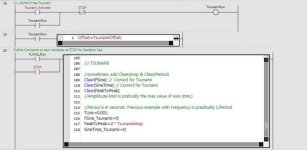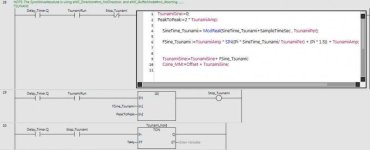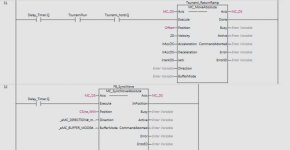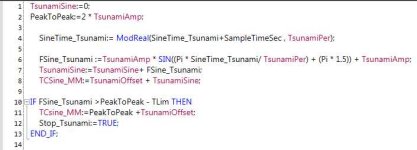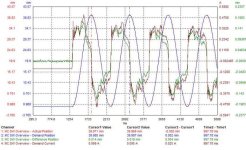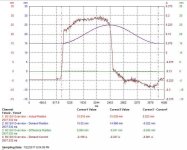It would be interesting to see a plot of the target and actual positions. I don't see the actual position output on any of the motion blocks.
I think it is a must that the target and actual positions as well as the control outputs are available for plotting.
Actually, the plot of desired position vs actual position is available from both the LinMot Drive (which shows excellent PID tuning) and the Omron NJ which can also plot any of the variables like
CSine_mm (which is the position variable) and the actual position, which the NJ gets continuously from the LinMot via EtherCAT. It can even provide a 10 second spread sheet of actual variable data every 1.0 ms ..
The important thing to remember here.. is this problem of mine is only one of programming skills with Sysmac Studio, which I am lacking. sigh! The only people that should be looking at this thread are Omron Engineers. Omron's written support on the NJ controller rivals the Library of Congress .. Manuals that if printed, and stacked, would reach the ceiling.
As I've said before.. your company did an awesome job in making programming incredibly intuitive. No problem doing damn near anything with the RMC75E... My first question was simply how to formulate an equation that would draw a 1/2 cosine wave, similar to a "S" curve..
Dirt, on this forum, showed me how to do that. Now, all that's left is a question for Omron: How do I stop that equation, hold for 4 seconds at the last position (which is the max positive, same as 2*Amp of the cosine wave)... then turn off the function block that created the cosine move .. and jump to a MoveAbsolute function block to ramp the position back to zero. BTW... there are no negative moves here. Nothing goes below zero.
With all the views on PLCs.net (over 2000) I was hoping there was an Omron Engineer about ... so far, my requests for help from Omron, on this question, have not been answered... But, I expect that help from them will eventually come.
Thanks for your interest, and past help... always appreciated..Regards, Michael




